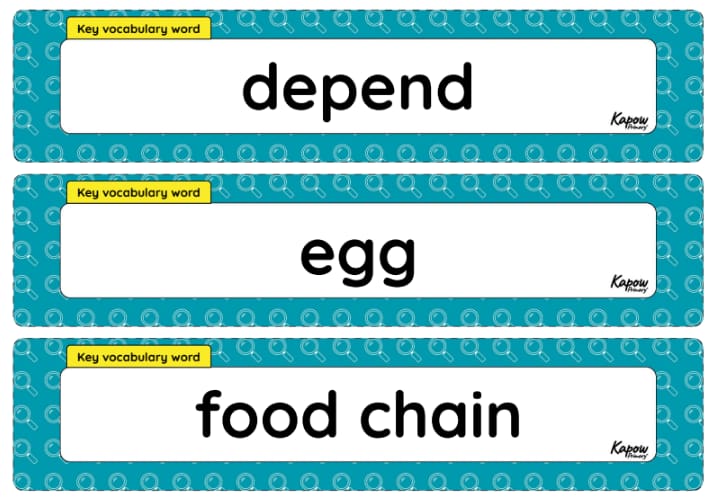Y1/2 (A): Making connections: Ocean protectors
Consolidating knowledge of life cycles, habitats and food chains through ocean and rock pool exploration.
The Curriculum and Assessment Review final report has been released. We’re reviewing the recommendations and planning for future updates. Learn more
Unit outcomes
Pupils who are secure will be able to:
- Describe how some living things in a rock pool have their needs met and how the conditions change.
- Order the stages of different animal life cycles.
- Identify similarities and differences between different animal life cycles.
- Recall different types of litter that affect ocean habitats and describe some of the problems linked with ocean litter.
- Suggest ways to reduce how human litter affects the ocean.
- Recall how to write a food chain and produce an example of an ocean food chain.
- Describe how litter affects a food chain.
When working scientifically, pupils who are secure will be able to:
- Complete a tally chart to record the living things in rock pools and summarise observations.
- Make careful observations and pose questions about ocean animals and their life cycles.
- Begin to plan an experiment and predict changes to materials in ocean water over time.
- Observe and make comparisons to materials soaked in water and summarise the results from the ocean litter investigation.
- Use the results to explain which litter is worst for the oceans and advise people about their material choices.
- Describe the role of a marine biologist.
- Record the number of living things found in the ocean as a tally chart and as a pictogram.
- Compare two sets of data and summarise findings.
Please note that Kapow Primary Science lessons are designed to be 1 hour and 30 minutes long to reflect the requirements of a core subject.
Suggested prior learning
This unit revises and builds on learning from the previous Y1/2 (A) Science units.Lessons
Y1/2 (A): Lesson 1: Rockpooling
Knowledge
- To describe a rock pool as an example of a habitat.
Working scientifically
- To record information about model rock pools.
Y1/2 (A): Lesson 2: Life cycles of ocean animals
Knowledge
- To compare animal life cycles.
Working scientifically
- To pose questions about life cycles.
Y1/2 (A): Lesson 3: Ocean litter
Knowledge
- To describe some ways humans affect the ocean.
Working scientifically
- To investigate what happens to different materials in the ocean.
Y1/2 (A): Lesson 4: Ocean food chains
Knowledge
- To describe how litter affects food chains.
Working scientifically
- To use results to advise about litter.
Y1/2 (A): Lesson 5: Being a marine biologist
Working scientifically
- To report on changes to ocean numbers.
Key skills
Key knowledge
Related content
Unit resources

Y1/2 (A): Science Knowledge organisers
A complete collection of the mixed-age Y1/2 (A) Knowledge organisers referred to in this unit. The Making connections units do…

Vocabulary display – Science Y1/2 (A): Making connections: Ocean protectors
A display version of the vocabulary for the mixed-age unit ‘Making connections: Ocean protectors’.
Cross-curricular opportunities
English: Spoken language; Reading – comprehension; Writing – comprehension.
Mathematics: Number – number and place value.
Geography: Human and physical geography.
British values: Mutual respect.

